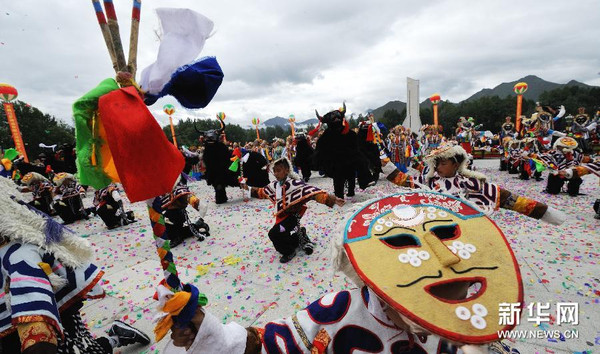Tibet promotes professionals for intangible cultural heritage protection

One hundred and twenty intangible cultural heritage protection workers of Tibet Autonomous Region came together in Lhasa on November 10th to receive one-week professional training, in order to enhance their professional skills and work capability as professional for protecting intangible cultural heritage.
The training combined the theory teaching and practice inspections and the experts with rich theoretical knowledge and personnel with practical experience in intangible cultural heritage protection gave lectures.
The training content included the relevant laws and regulations of intangible cultural heritage protection, the protection and management measures of projects and inheritors, the management measures of the use of intangible cultural heritage, the relevant application requirements of intangible cultural heritage projects, funds and inheritors, according to Culture Department of TAR.
Although Tibet has made great efforts in protecting its intangible cultural heritage and achieved very good results in recent years, there are still many deficiencies. “Although all are taking the path of productive protection, there is a problem of homogenization, such as wood bowl factories everywhere, rarely seeing other types of products. This has caused the waste of fund and policy.”

"Kongpo clothing made in Nyingchi is very good. Through fund aid, local production, Internet sales and other methods, it has achieved great results,” said one staff of Culture Department of TAR. He hoped that intangible cultural heritage protection workers would have exploiting awareness, make really contribute to the protection of ethnic culture.
Tibet has put in more than 3,000 people and collected more than 100,000 manuscripts, 2,000 audio and video tapes, and more than 450,000 photos since the survey of intangible cultural heritage launched in 2006.
There were more than 1,000 intangible cultural heritage projects in Tibet, covering ten main categories, like traditional music, dance, crafts, medicine, folk customs and so on.
Currently, Tibetan Opera and the oral Epic of King Gesar have been selected for United Nations’ Representative List of Intangible Cultural Heritages of Humanity.
Your Comment
Name E-mailRelated News
-
;
Based in Lhasa, Tibet Vista is a Tibet travel agency that specialized in Tibet permit, and Tibet tours for both private and group travelers at a local price!
•4 Days Lhasa City Group Tour from USD 460 •8 Days Everest Base Camp Group Tour from USD 850 •15 Days Mt.Kailash Group Tour from USD 1780 •2016 Tibet Train Tours from Beijing, Shanghai, Chengdu, Xining,etc










